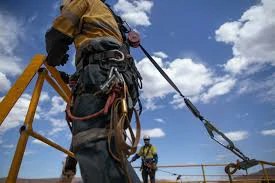


 349,500 Offered Certificates
349,500 Offered Certificates
 24/7 Online Training
24/7 Online Training
 Money Back Guarantee
Money Back Guarantee
 Fully Accredited Courses
Fully Accredited Courses

Created at: 22-02-2025 18:29
In a nation bustling with construction activity and outdoor work environments, ensuring the safety of employees working at heights is paramount. Working at heights training is a critical component of workplace safety protocols, designed to equip workers with the necessary skills and knowledge to minimize risks and prevent accidents. However, selecting the right provider for this training is crucial. This guide will assist businesses and individuals in Ireland in finding the most suitable Working at Heights training provider, focusing on key aspects such as accreditation, training options, course content, and overall value.
Accreditation ensures that the training received is recognized and meets specific industry standards, providing assurance of quality and compliance with regulations. In Ireland, look for providers accredited by recognized bodies such as:
Choosing a training provider with the right accreditation guarantees that the courses are conducted in accordance with national safety regulations, leading to valid Working at Heights certification.
The richness of the course content plays a vital role in determining its effectiveness. When selecting a provider, consider the following elements of the Working at Heights course:
Flexibility in training delivery is essential for accommodating varying schedules and preferences. Both online and in-person options have their own advantages:
Consider the learning preferences of your employees when deciding on the training format.
The quality of the training largely depends on the expertise of the instructors. Here are a few points to assess trainer qualifications:
While budget constraints are a reality for many businesses, investing in quality safety training is vital. When comparing costs:
One of the most effective ways to gauge a provider’s reputation is by looking at reviews and testimonials from previous attendees. Seek out feedback on:
Many training providers will showcase these on their websites or use third-party review platforms.
Before enrolling employees, use the following checklist to ensure you choose the best training provider:
Selecting the right Working at Heights training provider is an essential step in ensuring workplace safety and compliance with regulations. By focusing on accreditation, course content, trainer expertise, and providing flexible learning options, businesses can ensure their employees are adequately prepared to work safely at heights. Investing in quality training leads not only to enhanced safety but also to improved employee morale and productivity.
For more information on accredited Working at Heights training courses in Ireland or to enroll your employees, visit Ireland Safety Training or contact us at [email protected].